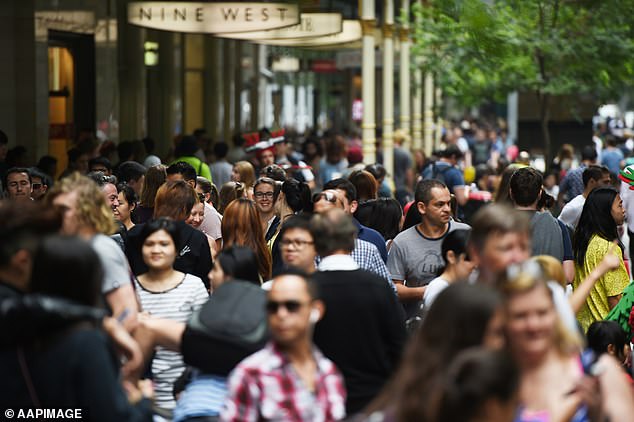Anthony Albanese’s government set to open the floodgates to more than 300,000 migrants
>
More than 300,000 migrants are about to arrive in Australia, putting even more pressure on housing, hospitals and schools.
- Jim Chalmers admitted that the forecast of 235,000 migrants was wrong
- The real number could dwarf that number and be more than 300,000
- The government has been working to reduce the huge backlog of visas
Anthony Albanese’s government is set to welcome 300,000 migrants to Australia this year, raising fears of increased pressure on housing, hospitals and schools.
Treasurer Jim Chalmers conceded that the forecast of 235,000 immigrants made in the October budget is likely to be small, as severe labor shortages attract foreign workers to the country.
The government has also been working to reduce the huge visa backlog, making the country even more attractive to immigrants.
He has announced an increase in the number of slots available for skilled immigrants, the number of slots in the Skilled Stream increased from 79,600 to 142,400.
It will give priority to the processing of qualified visa applications until 2023 and also introduced post-study employment rights and unlimited work hours for international students.
Dr Chalmers said Monday: “It is a reasonable assumption that the number that is printed in the budget for [2022-23] may be higher than 235,000.
“We have severe skills shortages and labor shortages in our economy that are acting as a handbrake.”
Angela Knox, Associate Professor of Work and Organization at the University of Sydney, told Daily Mail Australia that the influx of immigrants could cause serious problems in the short term.
The government has also been working to reduce the huge visa backlog, making the country even more attractive to immigrants.
“In the short term, it would put additional pressure on housing, schools and hospitals, which are already struggling,” he explained.
He also suggested that the total number of immigrants could exceed 300,000, but warned that the government should take into account the local labor market.
‘The government is aware of the tension between the national labor market and the introduction of immigrant workers and the consequences that this could have.
“The government is also well aware that it is not using temporary migrant workers as a substitute for skills development and training needs in the local labor market.
“So they’ll be monitoring what’s going on very closely and making adjustments on that basis.”
Dr. Knox also warned that the government would need to ensure that the current visa backlog is addressed.
‘It will be really important to ensure that there are enough staff and workflows to allow for efficient visas, issuance of visas. We do not want that delay to be further exacerbated.
“So a response will be required to ensure it’s an efficient process.”
However, he also said that larger numbers of migrants could eventually end up addressing the problem.

A total of 365,900 temporary visa holders left the country between 2019 and 2021 after being told to leave by then-Prime Minister Scott Morrison.
“Those problems are already occurring and we need to take steps to resolve them,” he said.
“And one way that we can do that in a very immediate sense is by bringing in temporary immigrants, so that’s one way that we can address existing issues that we have.”
Immigration expert and former Immigration Department undersecretary Abul Rizvi said this fiscal year’s 300,000 immigrants would be boosted by a surge in international student visa applications in 2022 and a large glut of visitors.
“Excess visitor arrivals, minus the number of departures, is the biggest difference we’ve ever had,” Rizvi said. the AFR.
A total of 365,900 temporary visa holders left the country between 2019 and 2021 after being told to leave by then-Prime Minister Scott Morrison.
Some 220,000 temporary visa holders have entered the country since the beginning of 2022 with applications to be processed.
There is a backlog of 872,000 visa applications that have not yet been approved by the government and another 2.22 million that have been made since June 1.
